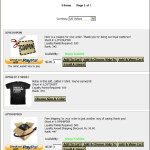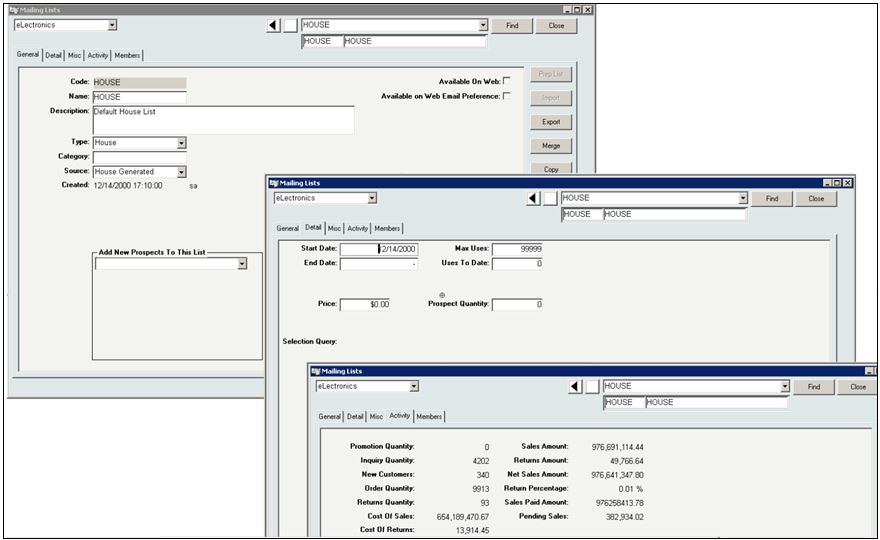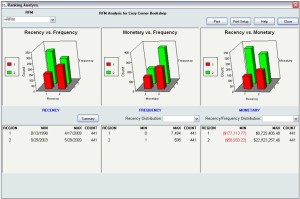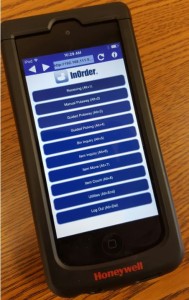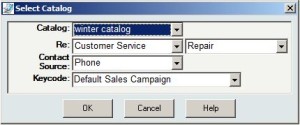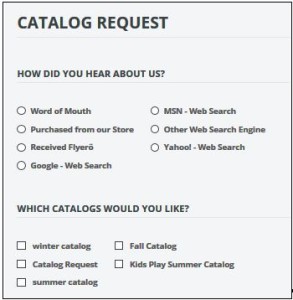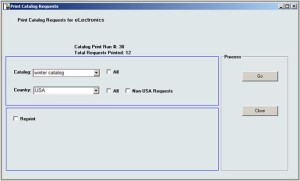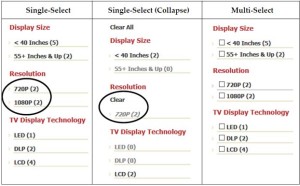Category: ERP Reporting
5 Mistakes to Avoid When Shopping for an ERP System
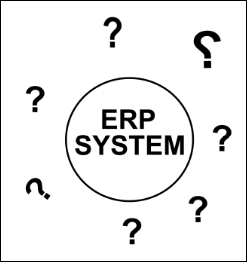 Researching ERP software can be a daunting task. After all, you’re looking for a system to help run your business. It will impact your customer service, how you manage your warehouse, your bottom line, and even your customers. Here are 5 mistakes to avoid when shopping for your ERP system.
Researching ERP software can be a daunting task. After all, you’re looking for a system to help run your business. It will impact your customer service, how you manage your warehouse, your bottom line, and even your customers. Here are 5 mistakes to avoid when shopping for your ERP system.
Not knowing what you need – It’s important to know if the new system will improve your bottom line, how it can help increase and maintain customer satisfaction, if it can help attract new business, how you can use it to make your processes and personnel more efficient, and what resources it provides for future growth. Be sure you know how the new system will benefit your business.
Not knowing how you will use it – Some people know their business needs a new system, but they might not know exactly what they need to do with a new system. If they don’t know their processes, what they need to help complete them, and any other features they’d like, they’ll likely end up disappointed and wasting time that could otherwise be used by making improvements. At worst, they’ll end up with a system that’s not appropriate for their business.
Not preparing for demos – Initially, a demo might be scheduled to highlight the software without knowing any specific requirements. When real-life problems aren’t discussed, how would you (or prospective vendors) know what is needed for improvement? Not being prepared with problems you need solved and requesting vendors to demonstrate solutions means you cheat yourself out of criteria when it’s time to evaluate vendors.
Not evaluating the vendors – Selecting a vendor is as important as selecting an ERP system. Don’t be so focused on the system that you forget to check out the vendors. If the vendor’s technical support and responsiveness isn’t also considered, you might be on your own. Be sure they are experts, professional, and available when they’re needed.
Unrealistic expectations – Some ERP shoppers don’t know what’s involved in selecting and implementing and ERP system. They’re asking it to do a lot, and it takes much commitment from everyone involved – including the vendor, the system, and the buyer. Not only during implementation, but for the life of the system.
4 Benefits of Customer Loyalty Programs
Loyalty Programs allow you to offer free or discounted items and other incentives to your loyal customers, in exchange for points they have earned by meeting certain qualifications of your loyalty programs.
Here are 4 benefits of using loyalty programs:
- Give customers incentives to buy, generating income for your business
- Show appreciation for your customers.
- Encourage customers to return to your business.
- Improve customer engagement. Many shoppers enroll in memberships / loyalty programs, and check retailers on social media for details, coupons, and specials.
You can offer points for a variety of activities. For example, you may award points to customers who meet minimum order requirements such as buying a specific item or spending a minimum amount, providing an email address, joining a mailing list, referring friends, ordering frequently, etc.
Points may be redeemed by placing an order. You might offer awards in the form of item discounts, merchandise credit, flat dollar amounts, free/discounted shipping, or free merchandise.
With the InOrder ERP system, customers can earn and redeem loyalty points using any means of order entry, including Customer Service, Point of Sale, and eCommerce. Points are added to a customer’s Loyalty Program Account after the order is shipped. Use InOrder to give your customers control over their own information, including checking loyalty point balances and history online. This is especially beneficial when points are earned from phone or in-person purchases. Adding loyalty program information to your packing slips and receipts can even prompt customers to visit your website. InOrder provides for flexibility, allowing you to change earning levels, manually overriding points, or deciding whether or not they expire. InOrder’s Loyalty Program reports enable you to track point balances and redemptions, and generate postcards to send to customers when their points are nearing expiration.
Contact us for a free demo of how you can use InOrder’s Loyalty Programs to benefit your business and show your appreciation to your customers.
5 Reasons for Retail Failure
Many reasons can cause problems with a retail business – poor pricing, location, not enough stock, poor planning, all of which can lead to unsatisfactory customer experience and ultimately, failure.
It’s important to understand why a project failed to learn for future success. How can things be different? How can you succeed next time? If you explore reasons for failure, you can use that information to help avoid it in the future.
Poor Location
Location might not seem important, but it is – especially if you’re thinking about international expansion. What do customers in that country expect of their local businesses? What do employees expect? What are the various business and employment laws? If your business is local, it’s crucial to know who your customers are and where they are. Keep these things in mind when deciding where your store will live.
Inappropriate Pricing
 Even in your home country, pricing is important for similar reasons – what do customers expect? How far will your customers travel for your products? Can the area support your pricing structure? If your competitors are charging much less, which store will shoppers pick?
Even in your home country, pricing is important for similar reasons – what do customers expect? How far will your customers travel for your products? Can the area support your pricing structure? If your competitors are charging much less, which store will shoppers pick?
Make sure your prices reflect your shoppers’ budgets, and that you can keep up with pricing of your competitors.
Not Enough Stock
Exceptional warehouse control, real-time inventory management, and communication between the distribution center and your ERP system are crucial to maintaining customer satisfaction. Think about it – who wants to shop for groceries in a store that doesn’t keep enough fresh produce in stock? or milk? or bread? Similarly, when shoppers look for clothes, they want to go to stores that carry their styles and sizes.
The other side of this problem is too much inventory because you don’t know how much you need. If you order a million dollars in inventory and don’t sell it in a timely manner, your money is losing interest because it is tied up while inventory sits in the warehouse.
Use an exceptional integrated ERP system to increase productivity. Here are ways your ERP system can help with this.
Inexperienced Partners
There are many things to consider, such as fraud, theft and security, and even training. When working with other parties or their software, unexpected obstacles and delays may be introduced, such as schedule conflicts, terminology misunderstandings, errors, unexpected expenses, and customer service issues. Being on the alert for this and working with experienced businesses and trading partners will go a long way in helping your projects stay within budget and on time.
No Planning
Determine your detailed plan of action items and include the names of the individuals who will be responsible for those tasks. Hold them responsible for the work assigned to them and require a weekly status report on completed tasks and road blocks encountered. This is especially important when implementing critical software for your enterprise.
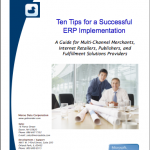 In more than three decades, the biggest mistake we see companies make is to not create an action plan that covers all aspects of implementation. For more valuable information about Implementing your ERP system, download our “Ten Tips for a Successful ERP Implementation” paper. Whether you’re considering a new ERP system or you’re just beginning an implementation, this paper will help you keep your implementation within budget and on time.
In more than three decades, the biggest mistake we see companies make is to not create an action plan that covers all aspects of implementation. For more valuable information about Implementing your ERP system, download our “Ten Tips for a Successful ERP Implementation” paper. Whether you’re considering a new ERP system or you’re just beginning an implementation, this paper will help you keep your implementation within budget and on time.
Cultivate and Grow the Most Profitable Segments of Your List with InOrder ERP
There are many times during the year when you send a mailing to a specific group of customers. With the InOrder ERP system, you can send promotional messages to customers, create new lists, import lists from external sources, and even export your mailing list to a spreadsheet format.
Promotional Lists
- Catagorize your lists and assign customers to them.
- Specify label formats.
- Use with the InOrder Address Validation interface to validate a batch of addresses within a specified range of U.S. postal codes.
- Automatically merge duplicate address records.
- Use with the InOrder Email Marketing Enhancement to send Email Blasts.
- Send followup notices. Define followup efforts that activate after a specified number of days.
Create Lists
- Import your own mailing lists with names and addresses.
- Import your own lists of Email address.
- Generate promotional keycodes as list segments are generated.
- Export your mailing list to spreadsheet format.
- Define your call lists.
RFM Analysis
- Simultaneously store an unlimited number of RFM scores for each customer. (Recency (most recent purchase date), Frequency (how many purchases a customer has made), Monetary (spending).
- Group customers by RFM cells.
Contact us for more information about mailing lists and marketing with InOrder.
UPS Study Provides Insights for eCommerce Businesses
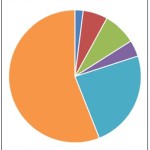 In its 2016 Pulse of the Online Shopper Study, UPS provides insights for eCommerce businesses as they plan their strategies for growth. This study explores online shoppers and how they have “Evolved.” Their shopping cycles are represented, showing a strong promise for future buying power. Included are discussions of new technologies they’re interested in, how and where they shop, and what retailers must provide to win them over or lose them.
In its 2016 Pulse of the Online Shopper Study, UPS provides insights for eCommerce businesses as they plan their strategies for growth. This study explores online shoppers and how they have “Evolved.” Their shopping cycles are represented, showing a strong promise for future buying power. Included are discussions of new technologies they’re interested in, how and where they shop, and what retailers must provide to win them over or lose them.
Devices are explored, with smartphone shopping showing the most growth. As technology (and retailers) make it easier and faster to use smartphones for shopping, satisfaction with them increases, fueling faster growth opportunities for businesses that support them.
Search habits are also shown, revealing that shoppers prefer to begin searching on marketplaces. According to the study, 90% of independent online retailers sell through them, and shoppers prefer them for product/shipping pricing, quick delivery, product selection and availability, and more choices in one place. Also mentioned are shopping trends, along with “cross-channel purchasing,” (where shoppers research vs. where they shop), and how social media influences shopping.
Shoppers revealed that they want to help themselves, but they also want help (such as Q&A, FAQs, chat, etc.) to always be available when they need it. Unfortunately, it doesn’t sound like many retailers provided those services. Hopefully, many will respond to these requests.
As can be expected with online purchases, returns are higher. While many shoppers prefer to drop their returns off at carrier locations, many also prefer to take their returns to a physical store. This provides opportunities for retailers to make these experiences easy for shoppers, who might make additional purchases while making their returns.
UPS has also conducted its sixth annual study of online shoppers, which includes five volumes. This link provides a download to Volume 1, which includes information to request future volumes.
Shoppers want control and flexibility. They want helpful responsiveness when they need it. They want fast searches, large selections, quality products that are available, and quick, low-cost delivery. They want access, coupons, and notifications without intrusion.
Use this valuable information to help you make decisions for winning these “Evolved” customers. And, in doing so, grow your business.
Contact us for a demo of how InOrder can help you implement the features so many shoppers demand.
What to Look for When Selecting the Perfect ERP Vendor
Selecting a vendor is as important as selecting an ERP system. ERP vendors must be experts in their field and, to an extent, yours. They must also be professional and available when you need them, and provide clear communication to keep you informed of important changes. Here are important things to consider about potential vendors when evaluating ERP systems.
- What is the implementation process? Is there a dedicated Project Manager who is readily available? The implementation of an ERP System is a large undertaking that needs careful planning with the proper time and resources allocated to avoid surprises during Go-Live. Since this is not something your company does on a periodic basis, a number of unknowns could end up causing you a lot of unnecessary problems and expense. Be sure the vendor has plenty of experience.
- What is the vendor’s availability for support? This indicates how responsive the vendor will be when you have questions or need assistance. How often is the system upgraded and what is involved? It is important that your system always has the latest updates for security and functionality – without disrupting your business.
- What about references? Request them and follow up on them. Reviews for vendors are as important as they are when shopping online. Experience with your industry is a plus.
- What types of communication are provided? Notices of updates are important for security and training, as well as details about what’s in each update. General information about the system is always helpful, and of course, documentation on how to use the system is a must. It is beneficial to you when the vendor is actively in touch and keeping you informed.
Make sure you can work with the vendor to get what is important to your business within a specific time-frame. Top-notch support is key. It takes commitment – not only during implementation, but for the life of the system.
To help with a smooth implementation, follow these tips from things we’ve learned over the years. And when you’re ready to check out ERP systems, contact us for a free demo of InOrder.
InOrder Catalog Request Manager Puts Your Brand in Your Customers’ Homes
Catalogs are necessary for direct response businesses. They attract new buyers, they help to sustain repeat buyers, and are typically less expensive than paid search advertising.
Customers can order catalogs from your sales reps:
Or they can order catalogs from your website:
You can review a report of all pending catalog requests before sending, and use the customer’s timeline to remove any invalid requests or spam. Catalog requests are printed as labels or exported to a spreadsheet.
Setup is easy – simply define each catalog / brochure in the familiar InOrder interface.
InOrder users have also leveraged this feature to track customers requesting other literature, such as rebate forms or white papers.
For more information about the InOrder Catalog Request Manager, contact sales@morsedata.com.
Use Your ERP Software to Avoid a “Big eCommerce Short”
 This article compares increasing eCommerce sales to the housing market bubble. It discusses loss of sales in the checkout process that merchants might know about, calling it a new “big short.” The article continues to explain where the sales breakdowns occur, including the checkout process, consumer confidence in the merchant, and how payment declines are handled.
This article compares increasing eCommerce sales to the housing market bubble. It discusses loss of sales in the checkout process that merchants might know about, calling it a new “big short.” The article continues to explain where the sales breakdowns occur, including the checkout process, consumer confidence in the merchant, and how payment declines are handled.
You can use your ERP system to help avoid each of those breakdown points. Using a smart checkout process and your ERP system to its potential, your eCommerce business can provide your customers with a smooth purchase process and the information you need to monitor it. Here are just a few ways to help protect your eCommerce business against abandoned carts:
Checkout process – Keep it simple. Show your shoppers the checkout flow to let them know what to expect. Keep it efficient with as few steps as possible. Giving customers an up-front shipping estimate, or the option to bypass registration (when appropriate) can eliminate some of the breakdown at checkout.
Trust – This is a big deal. Customers don’t want to think about security – they want you to. And if you’re not easy to contact, they may go elsewhere.
It can be complicated for any business to keep up with all the cyber attacks and payment fraud going on around us, but you must be vigilant. Keep up with your PCI DSS requirements, have a security process and an incident response plan, and train your employees on them. A good ERP system can help with features such as fraud scoring, and it will support your PCI DSS efforts to keep your sensitive data safe.
Make sure your customers can reach you immediately with any questions. Display your phone number where it can be easily and quickly seen. If a shopper has a question or problem navigating your site, make sure you can help. Keep Customer Service always at your customers’ fingertips, and make sure your customer service reps can pull up the customer’s shopping cart, edit it, and help the customer get through checkout if necessary.
Payment Declines – This is when knowing your business and your customers is so important. While you can detect patterns that are typical of fraud, you may also be flagging valid transactions, especially if you do business internationally.
Know Your Business – Where are your transactions failing? Put a process in place to check your data regularly, and follow it. Review the tools from your payment gateway(s), Google Analytics, and reports from your ERP system to see what might be causing a problem. And use these suggestions to recover up to 30% of abandoned carts with Email reminders. Use your data to your advantage by making adjustments where they’re needed.
It’s your business; be aware of it. Don’t bet against yourself.
If You Don’t Know How Your Customers Shop, They May not Find Your Products
We know that if shoppers can’t quickly find what they are looking for on your website, you may as well not offer it, because they will often just give up looking for it, or worse – they will go elsewhere. Giving your customers more options may help them find your products faster.
Web store searches are usually designed by product hierarchy, which is a popular setup. Items are grouped into levels that open as you click to drill-down further. The problem with this is that it’s like going from one room to the next – you usually have to backtrack to enter different rooms. With searches that are designed by product hierarchy, a shopper must keep returning to the “front door” to start looking for the next product.
Your shoppers can find items faster if you provide them with the ability to combine any different criteria, in whatever combinations they choose (even including that hierarchy). This concept is called “Facet Filtering.”
Facet Filtering helps customers fine-tune their search results as they search. Shoppers can make additional selections within current search results based on their individual interests, eliminating the need to sift through too many results all at once. It provides a lot of power for minimal setup.
An example of a search facet can be anything such as color group, size, manufacturer, price range, or whether or not a special feature is included.
Different Facet Types may be used: Single Select, Single Select/Collapse, and Multi-Select. When Single Select is used, facets appear on the website as links. Only a single facet may be selected per category. When Single Select/Collapse is used, facets appear on the website as links. Only a single facet (subcategory) may be selected per category. When a selection is made, the facet list collapses to only show the selected facet. With Multi-Select, facets appear on the website as checkboxes. Multiple facets may be selected for each category.
Rather than limiting your customers, give them as many ways to shop as possible and let them decide. Then check your analytics – use your InOrder reports and Google Analytics – to learn how your customers shop. InOrder’s superb flexibility allows modifications on the fly, so you can set up products to match how shoppers are searching for them.
Our most notable feedback from merchants using InOrder’s Facet Filtering on their website? Customers frequently searching for products starting with unexpected facets, such as Manufacturer rather than starting with a basic product category. As it turns out, customers often have their own plan they want to follow, and will be more likely to buy what they need on your website if it is flexible enough to let them follow that initial plan.
Finally, accommodating customers’ plans to find their first item will shorten their initial “Add to Cart” times. But customers also can get frustrated if their direct path to the next item they need requires “starting over.” Can they easily edit existing facet filters after placing an item in their cart? If they spent several minutes building a filtered list and now they need three more items from that list, can they add them all or do they need to rebuild the list three more times? Better yet, can they tweak the existing list if needed, without restarting it from the beginning? Check your analytics here as well, to confirm there are no patterns of extra steps they had to take to get to the next item, vs. steps they took on their own due to actual browsing.
With this approach, your abandon rates will be lower than ever, but more importantly, your eCommerce revenue will be better than ever.






